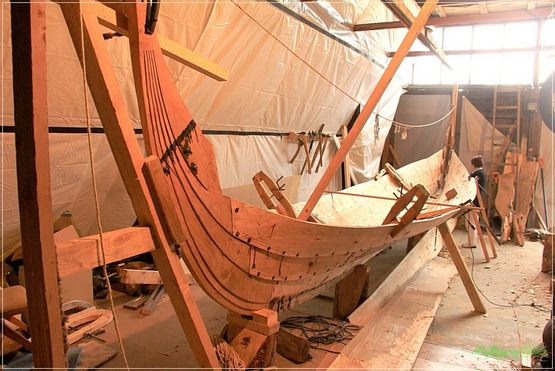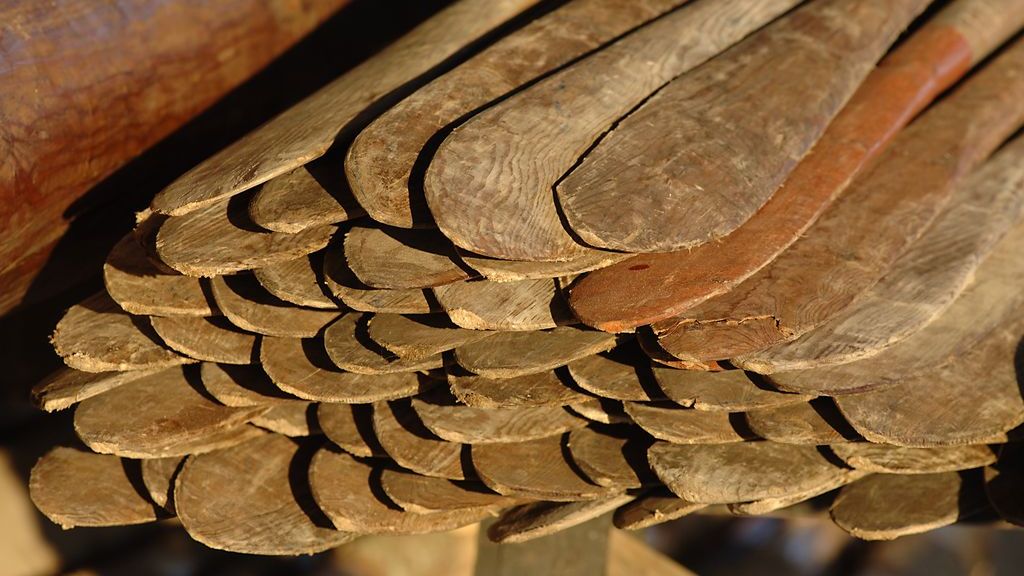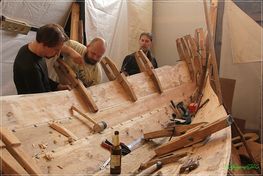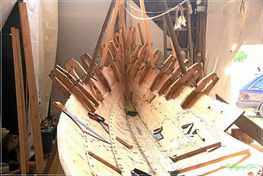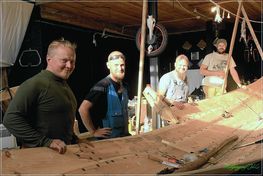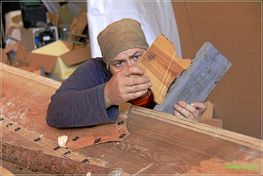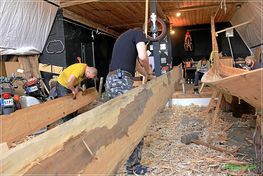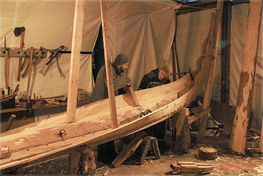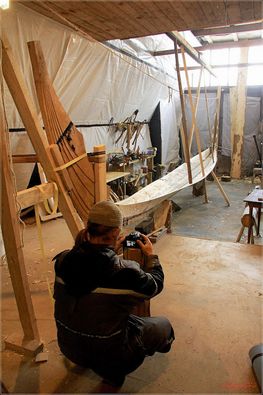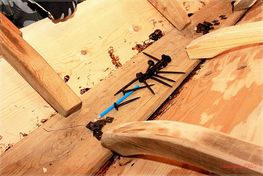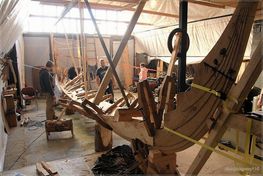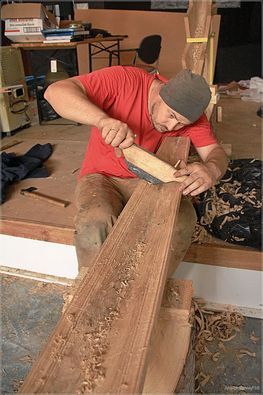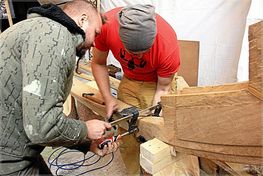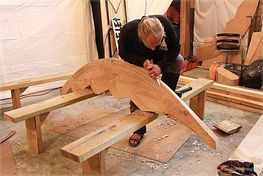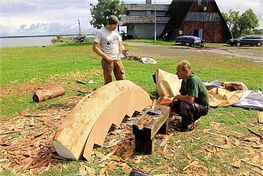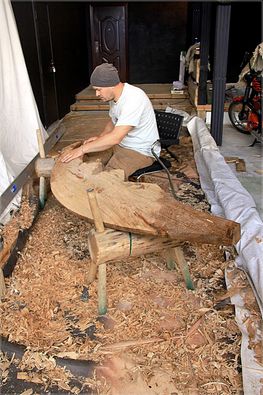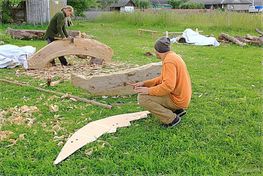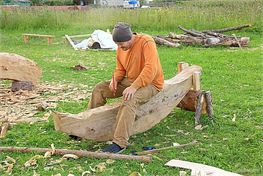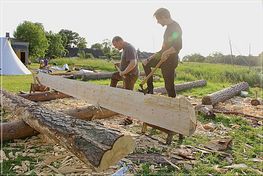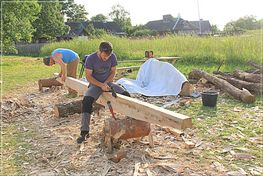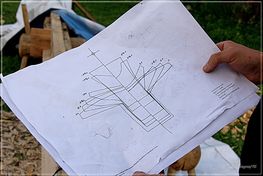At first glance, traditional boatbuilding, open source file sharing and social media may seem a strange combination. The first is very much a physical craft with techniques that have been refined over the centuries. The others exist in a much more virtual sense: modern phenomena that are constantly changing the ways in which we can communicate.
It was exactly this communicative potential that the Viking Ship Museum wanted to explore – could these two distinctly different worlds be combined to bring the craft of wooden boatbuilding to a wider audience?
Open source boatbuilding
A year after the Gislinge Boat Open Source Project began, it would seem that yes, they can. The project began in the spring of 2015: the Gislinge Boat – a 7.7m working boat dating from ca. 1130 – was reconstructed at the Museum boatyard and the entire process was shared online in real time, via a dedicated website and social media platforms. Most importantly, the working drawings for the Gislinge Boat were made available for free download so that others could also attempt their own reconstruction of the boat.
Virtual boatbuilding becomes a reality
Just two months into the project, more than 140 people from every corner of the globe had downloaded the drawings; some just out of interest, some with the intention of making a scale-model and some, like Edvards Puciriuss from Estonia, with the ambition of making a full-scale boat.
“We had been thinking about building a boat for several years. Ideally, it should be something dating from the end of the Viking Age and a boat-type that could have been used on the Baltic Sea”, tells Edvards.
However, they couldn’t find any archaeological boat-type that exactly fitted their needs, so in true open source style, they researched various different ship and boat finds, and chose the elements that suited the idea they had in mind.
Preparation for the project had already started in 2014, so by the time the working drawings for the Gislinge Boat were released for download, the dimensions of their boat had been determined by the materials they had acquired. It is larger than the Gislinge Boat but several of its elements have been directly inspired by the Gislinge Boat’s form, “Originally, we had planned to base our stems on one of the Skuldelev finds, but thanks to the drawings, we ended up making the stems mainly based on the Gislinge find. They are slightly enlarged but the placement and proportions of the steps are essentially the same”, tells Edvards.
Digital communication
While the working drawings helped provide the specific details they needed to complete their design, the digital communication of the boatbuilding process has also been an invaluable resource for the group, as Edvards explains, “While our boat is not a direct reconstruction of the Gislinge Boat, the information contained in the drawings has been of extreme importance, but the material published by the Museum, as well as the videos and photos that were shared online have been even more valuable for us”.
The many film clips, photos and blog texts shared during the project were an integral element of the open source philosophy the Museum adopted for the project. Museum curator, Tríona Sørensen, who was responsible for the open source element of the Gislinge Boat Project, explains the idea behind it, “The boatyard has always been a huge draw for guests at the Museum. We wanted to see if it was possible to generate that same interest among a broader online audience, and most importantly, to get other people involved in the craft of traditional boatbuilding”.
The more serious side of social media
The success of the approach has far exceeded the project team’s expectations. “Through the various digital media platforms we’ve been able to communicate all of the processes involved in building an early medieval wooden boat, from the splitting of logs for making planks to the smelting of iron for rivets and the weaving of sailcloth. It’s allowed us to come in contact – and have a dialogue – with other boatbuilders and craft enthusiasts world-wide. We can quite literally let them follow the work over at the boatyard, as it happens”, explains Tríona.
And as the project team have learned, the more detailed the material they share, the more popular it is, “We were quite surprised at the demand for complex and technical material concerning the boatbuilding process. The more detailed information we share, the more people want to know. We’ve really only just started exploring the potential digital communication has in terms of getting people interested and involved in boatbuilding and other maritime crafts, but seeing the work being done by Edvards and others makes it seem as though we’re on the right track”, concludes Tríona.
Edvards and his group are not the only ones who’ve taken up tools in the wake of the Gislinge Project. Several scale-models of the Gislinge Boat have also been completed in the USA and Canada and with the working drawings still available for download, the Gislinge Boat virtual community continues to grow. The open source element of the project is still on-going, as the Viking Ship Museum’s boatbuilders now work on reconstructing their third version of the Gislinge Boat. Their work is again being documented and shared on-line, and interest in following their efforts is steadily increasing. The Gislinge Boat – a slightly overlooked boat from the early Middle Ages – has been given a new lease of life in a very digital age.
